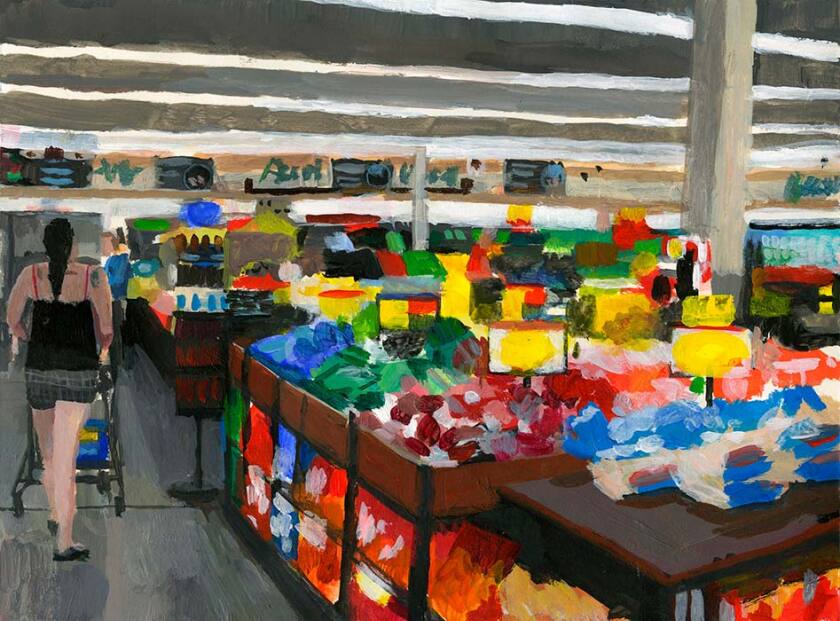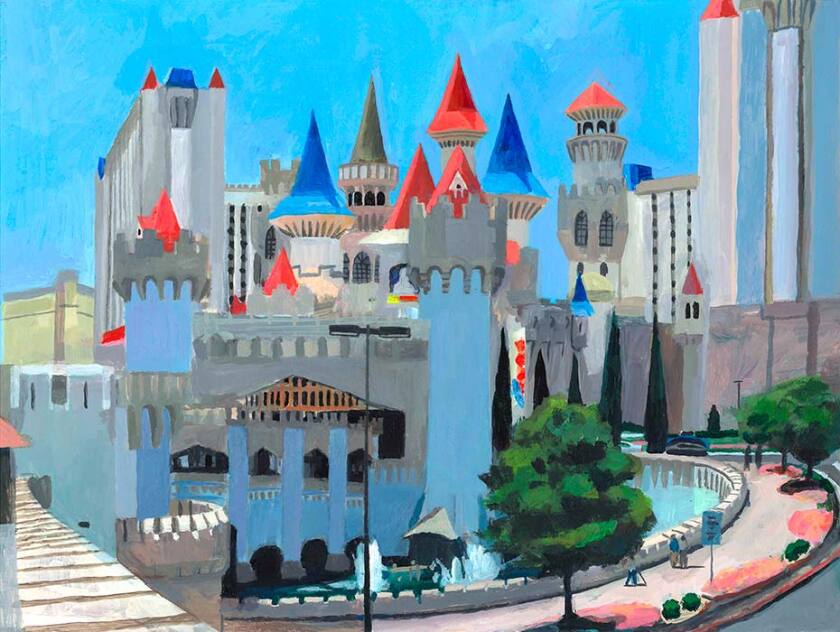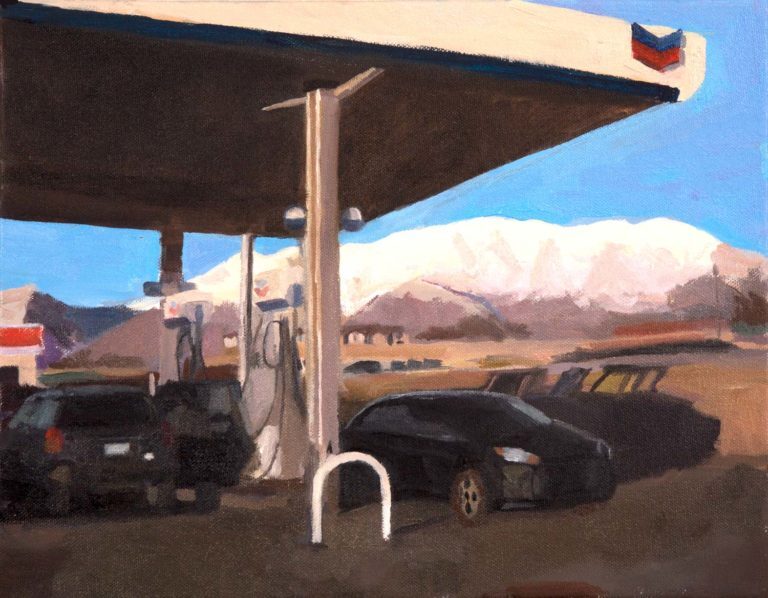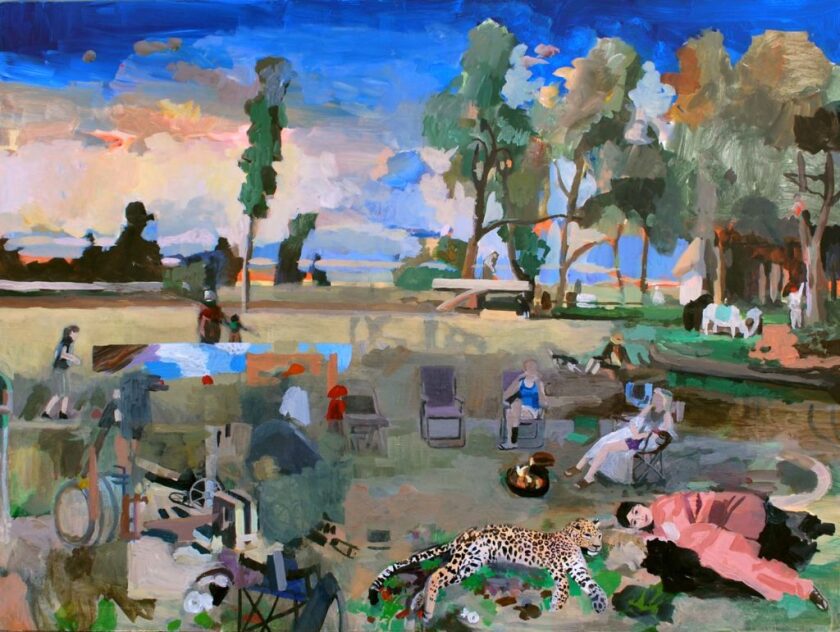Madeline Rupard draws from a range of imagery, both past and present, to instill a sense of time and story into her paintings
As an illustration major at BYU, Madeline Rupard was excited about drawing. But the more she improved technically, the more she felt constrained. “I started to feel like I was hitting a brick wall,” Rupard said. “I’d be excited about a story I was illustrating and I’d feel powerful feelings about the story but couldn’t quite express them visually the way I wanted to.”
Around this same time, Rupard studied abroad in London with the studio art program, directed that year by Professor Peter Everett and Professor John Bennion from the English Department. The study abroad classes challenged her conceptually, and Rupard realized she felt more at home in studio art than illustration. “I started to see through the program that what I was lacking was this tangible sense of urgency in the work,” Rupard said. “By learning how to paint and what paint was and how to apply it, I could reach these places that I hadn’t been able to reach before just by drawing stories.”
Even though Rupard changed her major after returning to BYU, she often finds herself at the intersection of literature and art, seeking a terrain between the two disciplines. She often compares her art to movies because of their ability to use specific details—characters, circumstances and location, for example— to convey abstract concepts like love and war, pain and death. “That’s what I’m trying to do with this element of story in my paintings,” Rupard said.

Inspiration for Rupard’s paintings comes from a variety of sources she encounters or seeks out, including images from social media, movies and photos she captures casually on her iPhone. During her study abroad, for example, she remembers watching a lot of Planet Earth and taking screenshots of landscapes that impressed her. Rupard integrates images like these into her multi-layered paintings, including her final paintings for the program.
“The image source could really come from anything that strikes me visually,” she said, “and by nature of that it tends to be more personal.” Rupard’s ongoing project, “Old World | New World”—which she has been releasing in parts— is perhaps her most personal yet. She describes this series as an intimate exploration of her experience as a contemporary American reflecting on the old world. The format allows Rupard to weave text and paintings into a visual essay where aesthetics and story mix, leaving room for the viewer’s mind to wander and make connections.
The “Old World | New World” theme was largely inspired by Rupard’s experiences in London as a study abroad student and in Hungary as a missionary for The Church of Jesus Christ of Latter-day Saints. She describes Hungary as a land that is both old and new at the same time.

“There’s this scene I always remember of an old lady walking toward me, carrying the cutest little basket full of onions and wearing black shoes and a floral dress, when a large truck sped past her toward the Ukrainian border,” Rupard said. “That image of the combination of machine and industry and this sweet little lady that’s been doing the same thing her ancestors have been doing for years—just buying things at the market—has always had a huge effect on me.”
Throughout “Old World | New World,” Rupard explores the evolution of history by juxtaposing events from contemporary life—such as flying in airplanes and eating in fast food restaurants—with the historical aspects of Europe. In America we’re kind of rootless, Rupard said, so we tend to latch on to mythologies and stories from the old world, but we adapt them, like through Disney movies or Las Vegas casinos that resemble medieval castles.

For a long time, Rupard said she felt self-conscious about her artistic interests and motivations. As an undergraduate, she found herself wanting to paint grocery stores and parking lots because of their modern, somewhat ritualistic nature, but she didn’t think they were serious enough. Now a second year MFA student at Pratt Institute, she has learned to commit to what she cares about.
“I’ve learned to distrust the super academic as a sole motivation in making work, and go for something that makes me feel electric,” Rupard said. “If I care about something then I hope it will come through in the way that I paint it. If it doesn’t, then I need to find a better way to do it.”
Artist Statement
My work attempts to extract the emotional content of narrative without explicitly defining what that narrative is. In my paintings and drawings, I am aggressively exploring the presence of time in the still image and the concept of ‘objective correlative’—that a combination of objects or figures can evoke specific but not predetermined emotions in the viewer. Through both personal observation and the slow, meticulous build-up of a fictional world, I’m looking for potential connections between the violent and peaceful, the old world and the new, the miraculous and the mundane.

